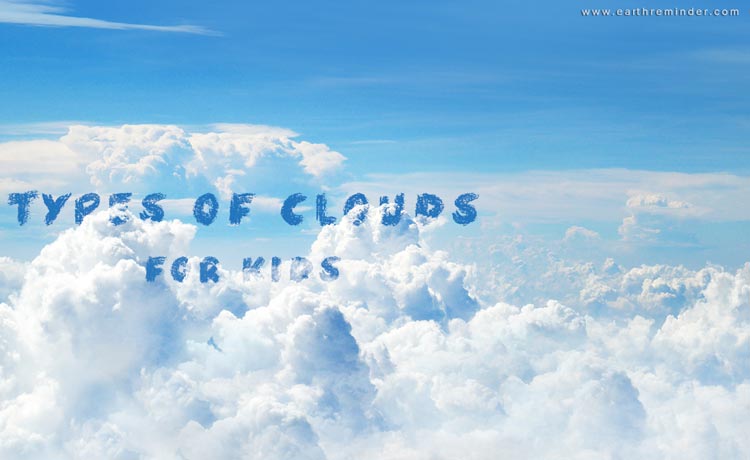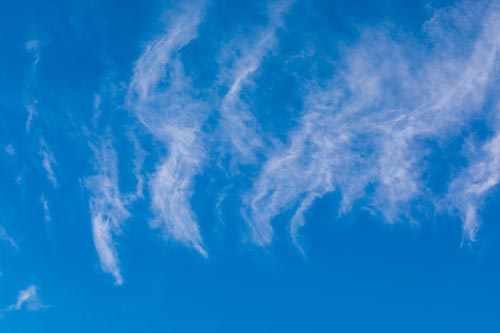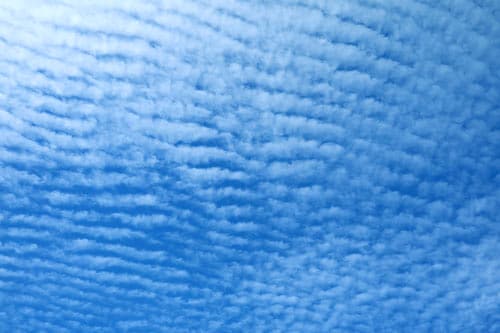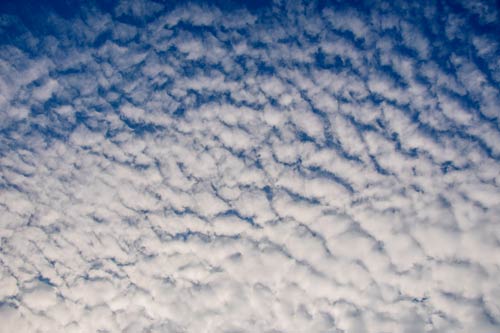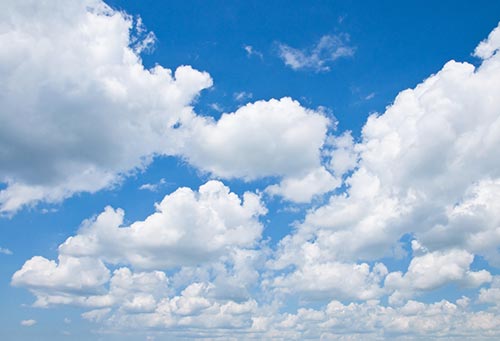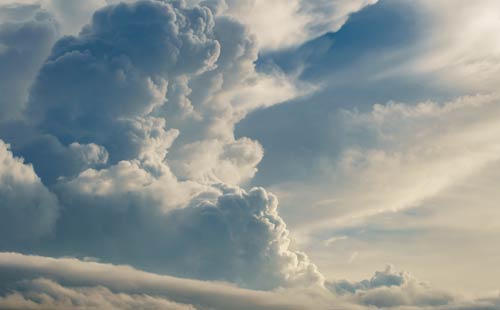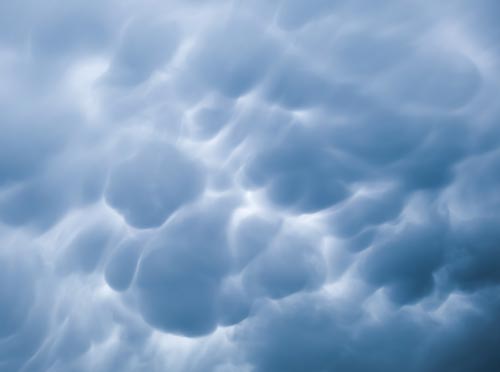Types of Clouds for Kids
Learn here different kinds of clouds with their characteristics.
What are the Different Types of Clouds for kids?
Clouds are the real beauty of the sky. Sometimes we can see a broad blue sky when there are no clouds at that time. Every time we observe the sky full of small white clouds, our mind feels relaxed. But, do you ever think why these clouds are of different colors and patterns? Kids even wondered why these clouds are of different types? What do they mean? Hence, today in this article, we will learn the basics of clouds. What are clouds, how they form, and what are the different types of them? So, let us start.
Table of Contents
What are Clouds?
Clouds are the mass of small ice crystals or droplets of water. Often both are mixed to form a cloud. They are very lightweight. So, clouds can easily float in the sky.
Different types of clouds are basics to learn for kids because they help us to know about the weather. Even we can guess the weather after learning their types and patterns.
Further, the clouds are white. This color of clouds is due to the spread of sunlight. We know there are seven different colors of solar or sunlight. So, they form a rainbow after the rain. The tiny cloud droplets can quickly scatter these seven colors (known as VIBGYOR).
Each light has a unique wavelength. Thus, the seven different wavelengths of VIBGYOR after being scattered combined to form the white color of the cloud.
How Does A Cloud Form?
Now, kids may question, what are the cloud types, and how do they form? So, let us discuss it here.
The formation of a cloud is easy to learn. Thus, you can see this through a few daily-life examples. Tiny water droplets, or snow crystals, or their mixture form clouds. So, for knowing the formation method, we must see how those droplets are made.
On a warm day, our clothes become dry faster. It is because of evaporation. Evaporation is a process of change of water droplets into vapors. It occurs when there is heat in the medium. So, the small water drops jump from the liquid phase to the volatile phase by taking heat.
Our earth holds water everywhere. Pools, oceans, lakes, swamps, rivers all are vast water sources. Like wet clothes, air particles take water vapors from the large water bodies as well. It is likely due to increased airy temperature and pressure.
But the air can hold a confined amount of vapor. So, if the pressure drops, the vapors again become water drops or solid ice. Condensation is a means of the exchange of gas to liquid. Likely, the formation of gas to stable is known as a deposition.
Still, condensation needs a surface. Many particles in the air such as dust, ash, bacteria, or metal salts act as a surface. If air cool-downs, the water droplets left and condensed over them. Thus, it forms cloud droplets. And the group of these droplets creates clouds in the sky.
As we learn several types of clouds, it will be easier to get their meaning. Further, many kinds of clouds have various formation methods.
What are the Different Types of Clouds?
So, many shapes, sizes, and patterns of clouds are present in the sky. Yet, we can learn their forms by different levels. Also, they get their names as per their kinds and height from the ground.
All clouds are masses of ice crystals and water droplets. Still, there is some variation between them. Some are of tiny size, and some are fluffy and dense. We can see different colors too.
Thus, let us learn different types of clouds and their meaning based on their level in the sky;
High-level
High-level clouds are those present at high heights. The height is about 16,500- 45,000 feet (5-13km) above the ground. These clouds are of three types, such as;
-
Cirrus
- We regularly see this type of cloud.
- These are mainly made up of ice crystals.
- A cirrus cloud has a lightweight, silky, fluffy, and thin shape.
- Further, wind currents are the reason for their wispy form.
- Through those wind currents, the ice crystals become twisted and spread into strands.
- In sunrise, they show bright yellow, and at the time of sunset, they become bright red.
- Kids can predict that the weather is fair if they notice such types of clouds in the sky.
-
Cirrocumulus
- These clouds are present above 5km from the ground.
- Cirrocumulus has tiny fluffy white patterns.
- Also, these are patchy, thin, ripple-like clouds scattered all around the sky.
- Sometimes, Cirrocumulus clouds have a grey fish-scale-like appearance. Hence, they got a fish-scale like an appearance and hence, they got the name “mackerel skies.”
- These clouds never mixed up together to form dense clouds.
- If these types of clouds appear in the sky, kids can easily predict fair but cold weather. But, in a tropical region, cirrocumulus clouds can forecast a hurricane.
-
Cirrostratus
- The third high-level cloud is Cirrostratus.
- These are mostly white, thin, and sometimes form a halo-appearance around the sun.
- This halo appearance is due to the refraction of light rays on the crystals of ice.
- You can see these like curly-sheets spread to a longer distance.
- As Cirrostratus clouds are clear, sun or moonbeams can easily pass through them.
- These clouds show the presence of moisture in the air.
- These clouds can become altostratus if they change their height.
- Thus, you can predict Cirrostratus as a symbol of rainfall or snowfall within 24-hours.
Mid-level
Mid-level clouds usually present above 6500-23000 feet (2-7km). We can call mid-level clouds as “alto” clouds as all of their members have “alto” prefix. Mid-level clouds are mainly present in the middle-height. These are of three types;
-
Altostratus
- The word altostratus comes from two Latin words. Altos mean height and stratus mean flattened or spread out.
- Thick clouds can form sprinkles of rains or snow.
- Typically, altostratus is grey or blue or bluish-grey colored.
- These have several varieties present all around the sky.
- These are aligned like flat grey sheets and normally boring.
- Altostratus may release rainfalls, but if the rain touches the ground, it becomes nimbostratus.
- These are thin clouds, and hence you can see the sun in an opaque way.
- So, kids can make you aware of constant rain or snowfall after seeing these types of clouds.
-
Nimbostratus
- Usually, Nimbo means rain or shower, and stratus means flattened.
- These are hazy, dark, and grey colored clouds spread all around the sky.
- Nimbostratus are very thick clouds and thus easily block sunlight.
- Like altostratus, these are also featureless.
- If you see a nimbostratus cloud, then you can forecast continuous rain or snowfall.
- Sometimes these are also linked with mid-latitude cyclones.
-
Altocumulus
- Altocumulus are usually grey or white.
- These look like unique bands or areas of cells.
- Two words altos and cumulous having meaning flattened and heap, sequentially.
- Altocumulus are usually known as cloudlets.
- Due to fluffy rounded ball-like appearance called “cotton-balls’ or “sheep back.”
- They form a rare shower of rain or snow.
- Rainfall from altocumulus is in the form of virga (when rain does not touch the ground and diffuses again).
- Thus, kids can easily forecast fair weather after seeing this type of clouds.
Low-level
Low-level clouds present just above 6500 feet from the ground. These are of four types;
-
Cumulus
- These clouds typically look like fluffy big cotton balls. Also, you can see them as the head of cauliflower.
- Cumulus is present about 1200 to 6500 feet above the earth’s surface.
- These may lead to rare snow or rain showers.
- Such types of clouds are a symbol of fair weather.
-
Stratus
- Stratus clouds are mainly present between 0 to 1,200 feet in height.
- It covers all around the sky.
- These clouds give an appearance of thin, white sheets.
- Further, in mountain regions, stratus clouds seem like fog.
- They do not produce any precipitation, but sometimes you can see drizzles (very light snow or rainfall).
- So, your kids can easily forecast fair but gloomy weather.
-
Cumulonimbus
- The word cumulus means heaped, and nimbus means a rainstorm.
- These are dense clouds of grey color.
- Also, we can see cumulonimbus clouds as towers or massive mountains from far away.
- These clouds are present at a height between 1100 and 6500.
- Cumulonimbus clouds are the result of hot summer days due to high aerial temperature.
- These clouds may lead to heavy rain and storms.
-
Stratocumulus
- Stratocumulus remains at the height of 1200 to 6500 feet.
- These clouds look like honey-combs or lump-like at the base.
- Also, they have a color of patchy white or grey.
- It gives light showers.
- Stratocumulus is a sign of fair weather but may lead to the storm.
Other Special Types of Clouds for Kids
Besides these usual clouds, there are four more types of clouds such as;
Contrails
- When high-flying jet airplanes move quickly, contrails are formed.
- The formation of contrails may show the presence of moisture in the atmosphere.
Mammatus
- When altocumulus, cirrus, cumulonimbus, and others have pouch-like shapes, they are considered as Mammatus clouds.
- If the cold air present within the cloud sinks, these clouds are formed.
- Thus, these clouds usually show severe weather.
Orographic
- Orographic clouds have hills or mountain-like features.
- Usually seen around the hill regions.
- These are formed by the air flowing from oceans.
- Sometimes orographic clouds also appear as lines.
- Thus, morning orographic clouds may lead to an afternoon thunderstorm.
Lenticular
- Lenticular clouds, as its name shows, look like lenses or almond or flying saucers.
- These may be seen after hilly terrains.
- Lenticulars are scarce types of clouds.
Clouds are the most beautiful things we see almost every day. The big sky is surrounded by many tiny clouds. Big or dense clouds block the sunlight and give a sunny day. Grey or yellow color of it can display harsh weather. So, these are the best sources to teach many things to our little ones.
Further, Kids always feel curious about “what are the different types of clouds?” We have to make them understand what they are and different kinds of them.
Not only various facts about clouds, but kids can also find much other learning here. So, follow us for more such articles.
